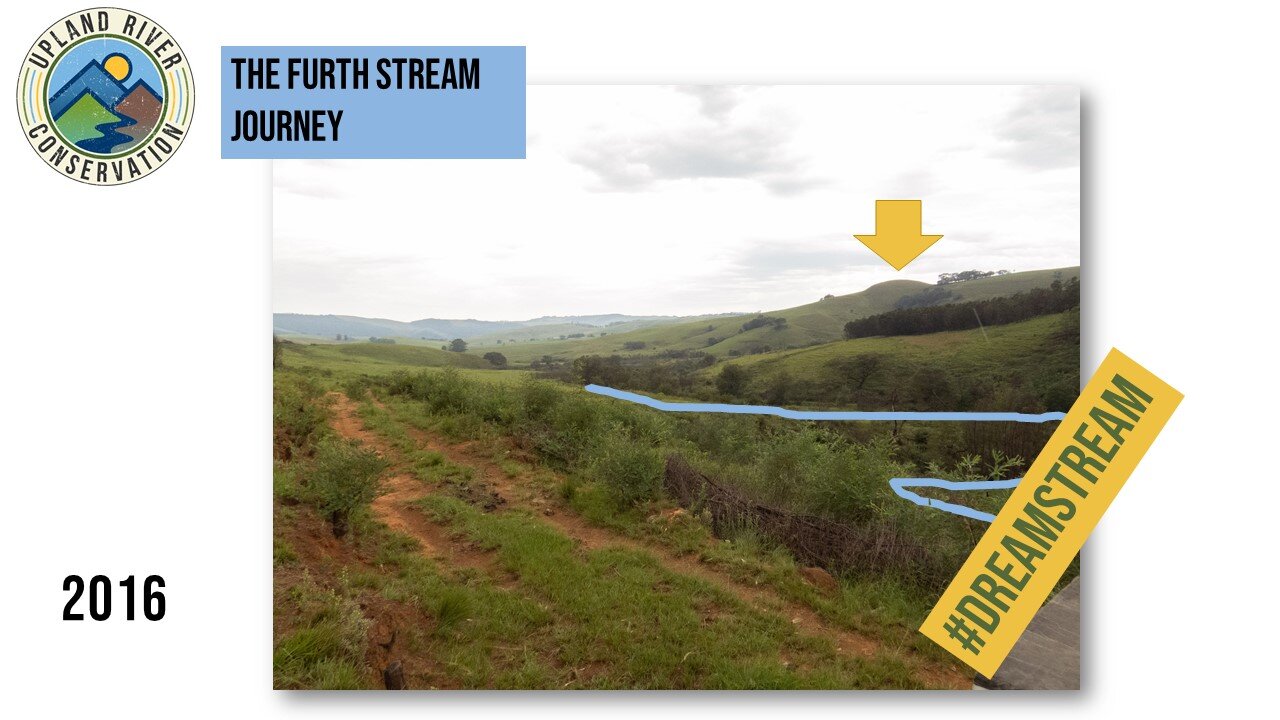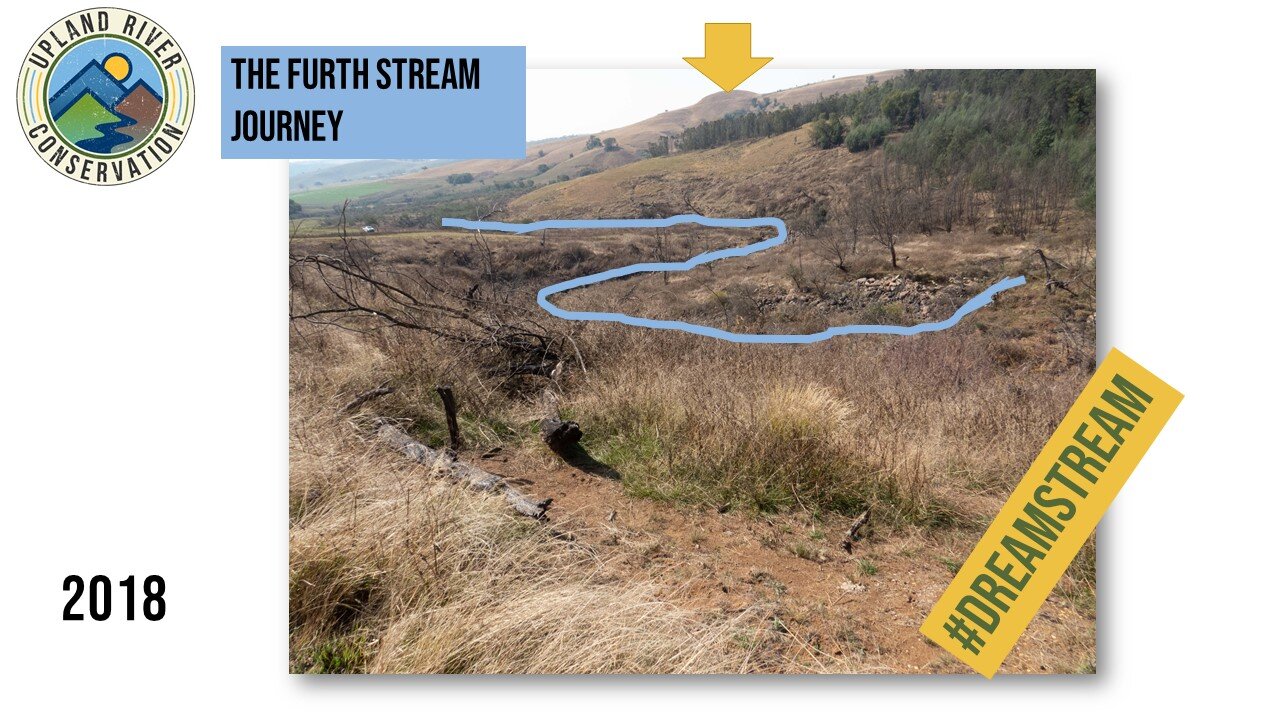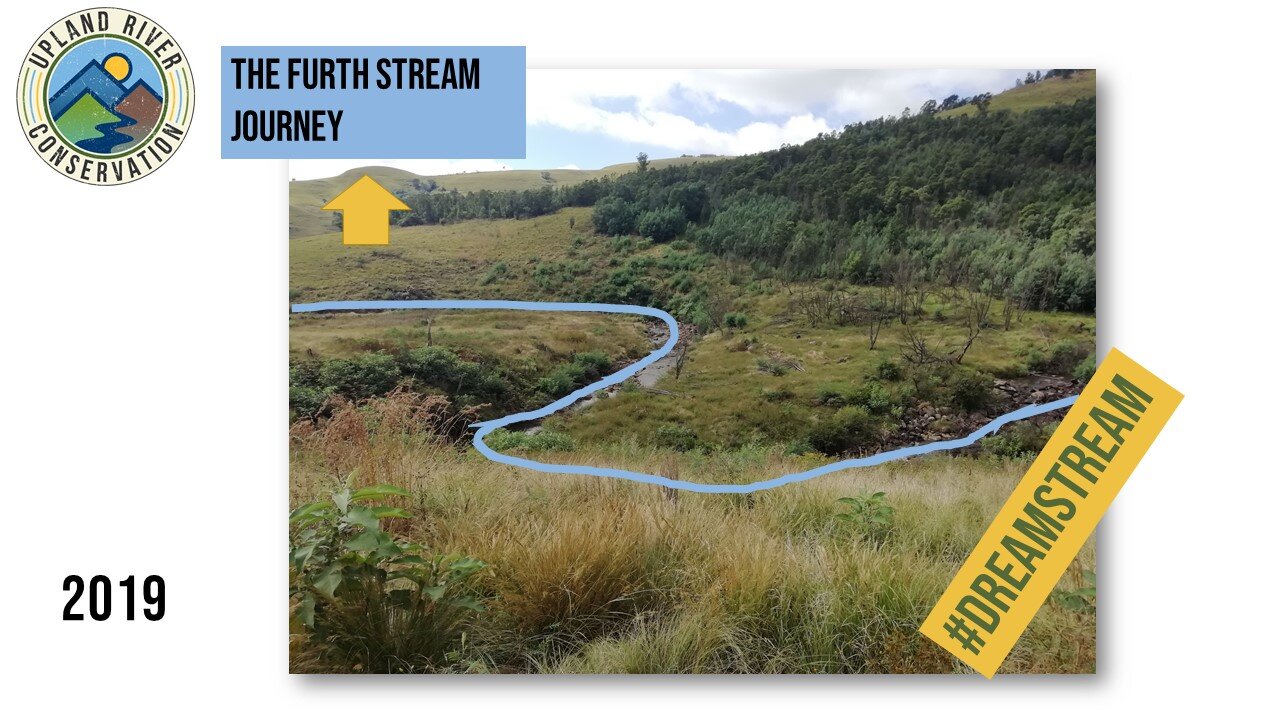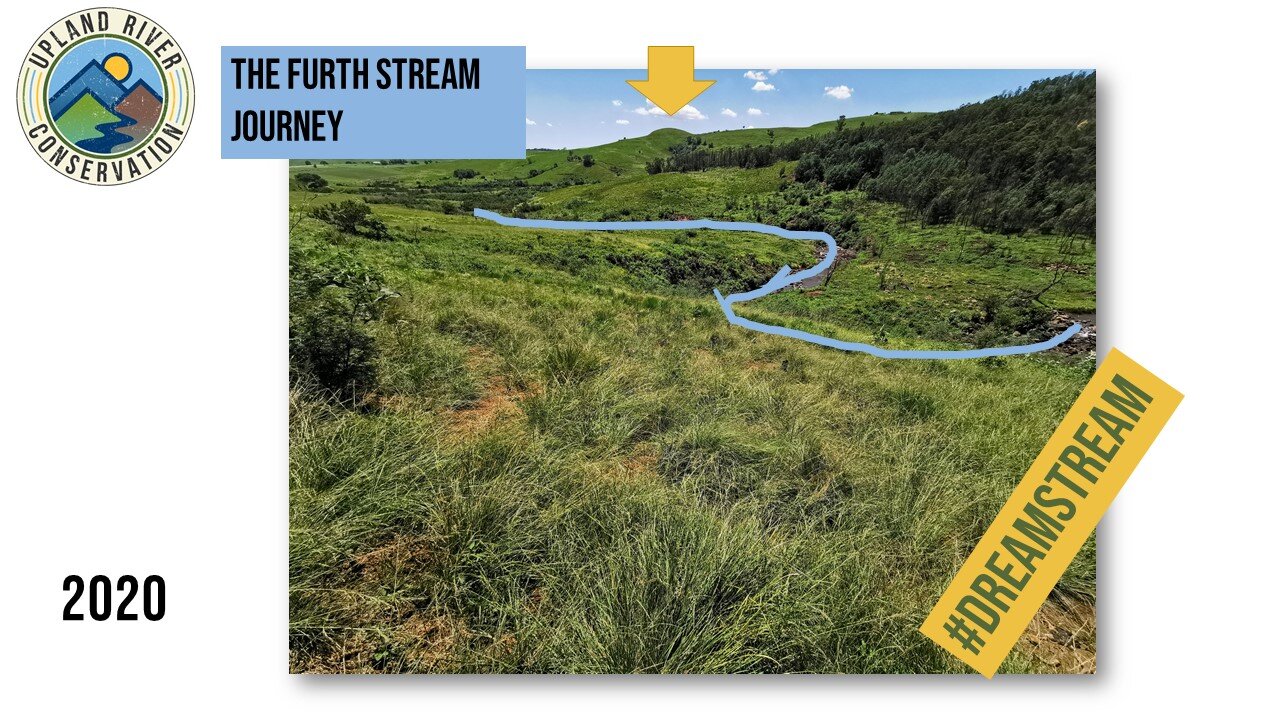The Dreamstream
The Furth Stream is a tributary of the uMngeni River in the Dargle Valley in the KZN Midlands. This stream became inundated with black wattle trees in the approx last 5kms of its course, before its confluence with the uMngeni. Back in 2013/4, and stemming from a biodiversity stewardship program in the headwaters of the uMngeni, WWF arranged funding to clear the stream. That funding was part of an innovative Water Balance Program, in which industries downstream in the catchment were encouraged to become water neutral, by funding the removal of water-sapping trees in the catchment to the extent of their water use.
The stream was cleared of wattle initially, and then for 3 years thereafter, regrowth was controlled. After the 3 year period, the landowner is responsible for taking over the area, and keeping it clear of the invasive wattles.
In the case of the Furth Stream, the lower 4kms of the valley benefited from the input of the landowner’s lessor, namely the Natal Fly Fishers Club, who assisted the WWF in the day to day management of the contractor, and in the handover phase.
The devil lies in the detail of the hand-over to the landowner, and in the extent and nature of the follow-up measures required after the initial 4 year period. In several areas within the uMngeni catchment, the extent of the wattle regrowth, and the ability of grasslands to re-populate the cleared areas, have made for a successful formula.
The valley of the Furth stream is not one of them.
Here, difficult steep river valley territory has somehow contributed to rampant regrowth of wattle and other pioneer species. The amount of work required to control this, and to return the landscape to an economic grazing asset for the farmer, exceed the resources of the farmer, both in terms of cost, available time, and number of labourers to do the work.
Unlike some of the open hillsides that were cleared, the follow up work in the Furth Valley has been arduous. Between 2016 and 2019 the contractor passed through the valley twice each year, cutting and poisoning wattles and other plants. In 2019 the waste timber was removed from the immediate riparian zone, and in most years, fire passed through the valley. In witnessing this 3 year process, it was at times difficult to assess whether progress was in fact being made, or if the valley was going backwards.





In reviewing photographs and Google Earth images, it is clear that progress was in fact made, but even now, walking in the valley at times of rank re-growth, a layman would struggle to appreciate the amount of work that has been done, or to see the vision of what the valley should, and could ultimately look like.
In recent initiatives, post the handover to the landowner, minor (and sadly insufficient) clearing of regrowth has occurred, and erosion measures have been implemented by Upland River Conservation (URC) with help from the Duzi uMngeni Conservation Trust (DUCT) , The Natal Fly Fishers Club (NFFC) and the landowner. These measures have included planting of grass seed, and installation of erosion control mats, but are on a pilot scale only, due to the limit of resources.
At present the valley suffers from earth that was baked , and damaged, in fires that went through the valley and the piles of brush that lay there after the clearing work. The ground lies bare in many places, and in others is conducive to the germination of only wattle, bugweed, khakhi weed, bramble, and blackjacks. Grass cover of palatable species or otherwise, is currently very poor. The rank regrowth of combustible material, and the tendency of grass species to tolerate fire, act as incentives for the landowner to burn the area, and to the layman the burning practice achieves a “tidy up” which seems to have merit. However for a return to good basal cover, and soil structure, in which organic matter and mulch serve to speed the re-establishment of viable grassland, a more expensive management protocol is probably required.
Our objective is to continue to fell regrowth of alien pioneer species during the summer, so that a fire hazard does not accumulate ahead of the dry winter months. At the same time we seek to sow grass seed, which will benefit from the mulch effect of the cut weeds. So far, in our pilot areas, we have used a mix of seeds which includes fast germinating eragrostis teff, together with slower germinating indigenous species. e teff is indigenous to Ethiopia, but is a non-viable annual grass, so its purpose is merely to secure the soil, and out-compete weed seeds in the first season, while the slower-germinating species take hold. Once the slower species do take hold, it is intended that they too will compete with weed seeds by creating a cover through which the weeds are less likely to grow. Weeds growing within viable grazing species will also be controlled by grazing cattle. Once this carpet of dense cover is established, fire will again be an important part of the restoration formula. In addition to the above, old logs and erosion control mats will be used to stop sheet erosion where it occurs. The above is the protocol being implemented in the pilot areas.
The end result which we hope for, is a densely grassed valley, which has economic value to the farmer as grazing, and in which normal, and affordable agricultural practices of fire and grazing are adequate in preventing significant re-infestation by alien invasive plant species. Early indications are that we may have achieved this, at least to some degree, in the pilot area.
The Furth Stream work falls within URC’s “Upper uMngeni Super Catchment Project” proposal, which is currently seeking funding. In the meantime URC and the landowner will continue with what pilot work we are able to afford.



